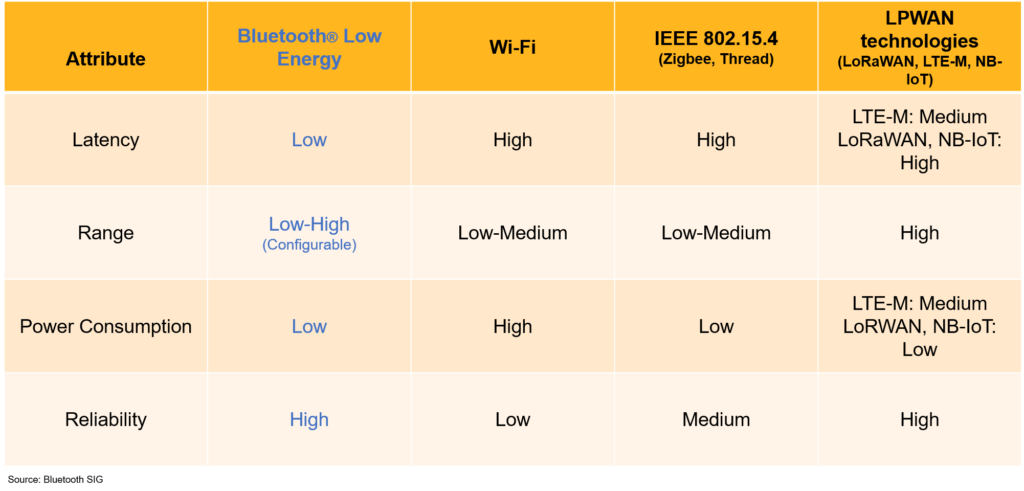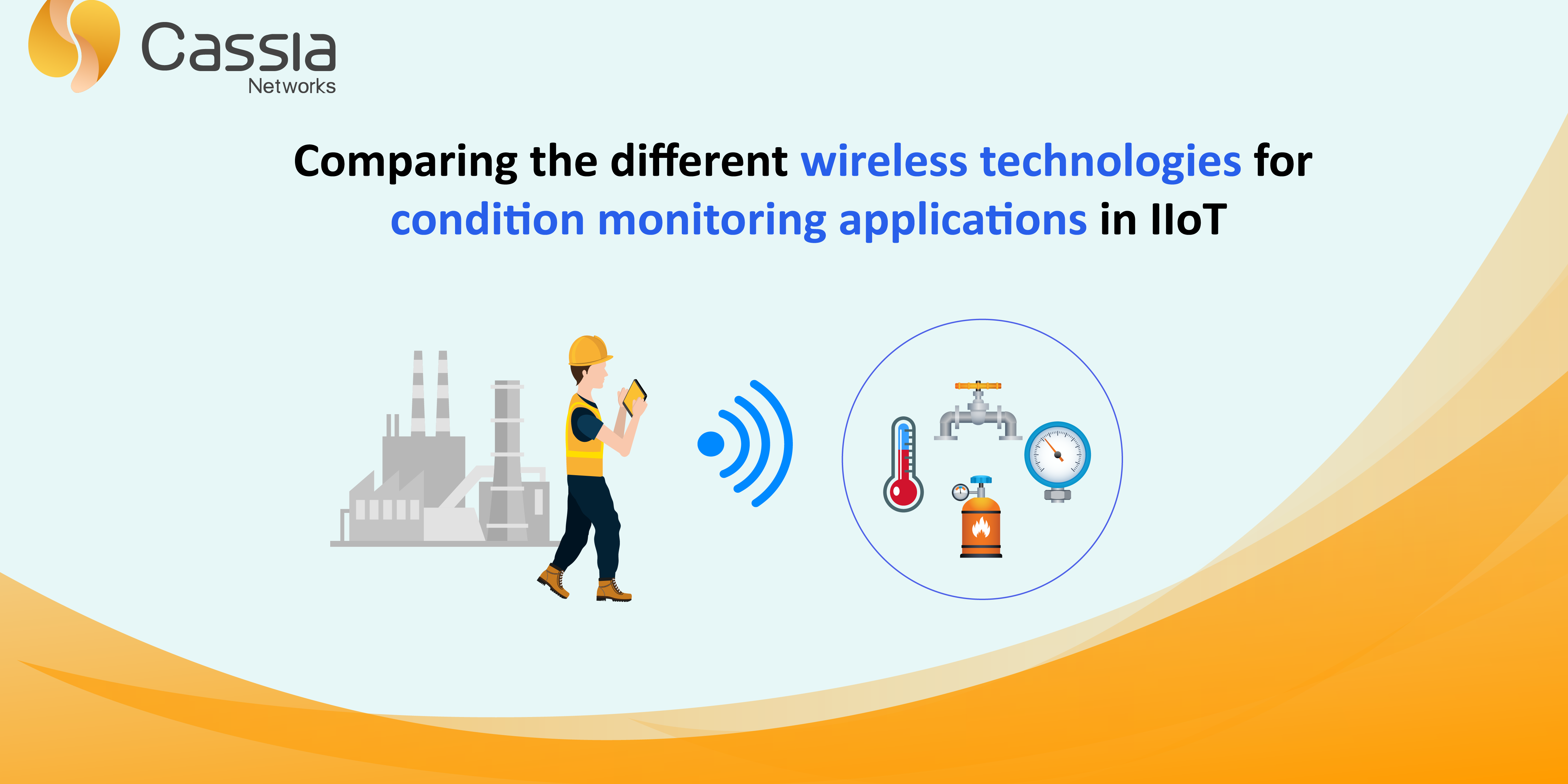There are several wireless technologies to choose from, each with their advantages and disadvantages for condition monitoring applications in IIoT. There is no one size fits all wireless connectivity solution. Every use case has different needs and specifications required to achieve the desired results. In this blog, we’ll briefly describe some of the key attributes that exist in the most common wireless technologies being used for condition monitoring applications as well as discuss their importance. The key attributes we’ll review are the following: latency, range, power consumption and reliability. Let’s explore these in further detail.
Latency is a measure of delay. It’s the time it takes for data to be transferred from its source and destination, usually measured in milliseconds. As a general rule, the lower the latency, the better. For condition monitoring applications, latency plays a critical role. For example, sensors are now being used to measure the health of equipment such as vibration and temperature to detect early signs of failure. Therefore, achieving accurate and timely data is important which can only occur when the latency is low.
For condition monitoring applications, the range is an important attribute to consider. The size of a factory and/or manufacturing plant can span very large areas, therefore it’s imperative to choose a wireless technology solution to ensure reliability and seamless connectivity. The range of a wireless network can also depend on several factors, some of which include: network environment, (noise from RF signals, temperature, fixed objects, etc.), the sensitivity of the receiver and Tx power. When trying to determine signal range and reliability at great distances, it’s important to consider radio spectrum also known as radio frequency, or RF which refers to the range of radio frequencies that are used for communicating. The radio spectrum has frequencies from 30 Hz to 300 GHz. Typically, the lower the frequency, the longer the range but with a lower frequency comes a reduced data rate that can be supported. Bluetooth technology uses a 2.4 GHz ISM spectrum band (2400 to 2483.5 MHz). This allows for a good balance between range and throughput and the 2.4 GHz band is available worldwide, making it a popular choice for IIoT applications such as condition monitoring.

Power Consumption is a key attribute that should be considered when selecting the right connectivity solution for your IoT device and condition monitoring applications. With billions of IoT devices in the market, most of these devices are running on some form of battery, usually a tiny coined cell battery. Imagine how costly it would be to replace thousands of batteries for hundreds of assets in a manufacturing plant, not to mention the negative impacts on the environment due to increased environmental waste. Other factors affecting power consumption include frequency and amount of data transmission, Tx power as well as the surrounding environment.
In an industrial plant or factory, the need for high reliability is critical since a single missing data point may result in a factory shutdown or safety issues. Even a small percentage of data loss can lead to unscheduled downtime and in some cases, a factory shutdown. This is especially true for when hundreds of wireless sensors are being used to monitor the health of equipment. The need for real-time data as well as high-frequency data transmission becomes critical to detect and predict machine failure and provide machine operators with the information they need to proactively identify and correct any problems.
In sum, understanding the specific needs of each business use case and how condition monitoring applications will help reach your goals is the most important aspect when weighing out the pros and cons of the different wireless technology solutions available today. For condition monitoring applications in IIoT, Bluetooth technology has become the prominent technology of choice for many manufacturers because of its low power, low cost, high reliability and advanced security features.








